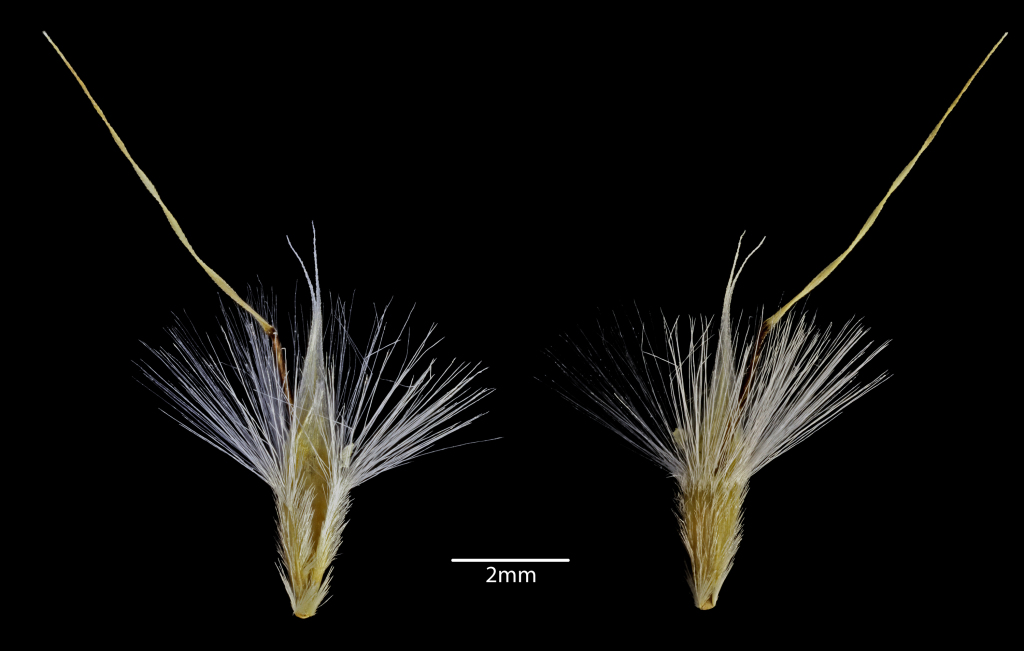Rytidosperma semiannulare
(Labill.) Connor & EdgarTufted perennial. Culms to 60 cm(–1 m) high, 2–4-noded. Leaves glabrous or nearly so; blade finely inrolled or rarely channelled, to 20 cm long and c. 1 mm wide. Panicle linear to narrow-lanceolate in outline, 5–12 cm long, the base often remaining enclosed by upper sheath. Spikelets purplish when young, mostly 6–8-flowered; glumes subequal, narrow, acuminate, 7–13(–18) mm long; lemma 2–3 mm long, evenly covered by hairs up to c. 0.5 mm long, with a conspicuously longer upper series c. 3 mm long; lateral lobes erect, very fine, not or barely exceeding the upper series of hairs (rarely exceeding hairs by as much as 4 mm); central awn brown and distinctly twisted in the lower third, exceeding lateral lobes by 3–7 mm; palea lanceolate, exceeding sinus by 1–2 mm. Flowers Oct.–Dec.
LoM, Wim, GleP, VVP, VRiv, MuF, GipP, OtP, WaP, Gold, CVU, GGr, DunT, NIS, EGL, EGU, WPro, HSF, HNF, OtR, Strz, VAlp. Also SA, NSW, Tas. Occurs in damp sites on alluvial soils, occasionally semi-aquatic, and in light sandy soil mostly near the coast.
All records of the species are from south of the Great Dividing Range with a few collections in the north (the Mt Pilot area near Beechworth and Red Cliffs).
A few specimens, mostly from south Gippsland and the far south-west of the State, have the lateral lobes of the lemma distinctly longer than the upper series of hairs and in this respect superficially resemble Rytidosperma longifolium. However, the strongly twisted central awn, the general habit and swampy habitat are more typical of R. semiannulare. These collections may be the result of hybridization between R. semiannulare and R. setaceum, both species being known from most of the localities. A collection from a swamp east of the Glenelg River, 23 km south-west of Casterton is unusually robust (approaching 1 m high and with glumes to 17 mm long), but in other respects appears to be typical R. semiannulare.
Walsh, N.G. (1994). Poaceae. In: Walsh, N.G.; Entwisle, T.J., Flora of Victoria Vol. 2, Ferns and Allied Plants, Conifers and Monocotyledons, pp. 356–627. Inkata Press, Melbourne.
 Spinning
Spinning

